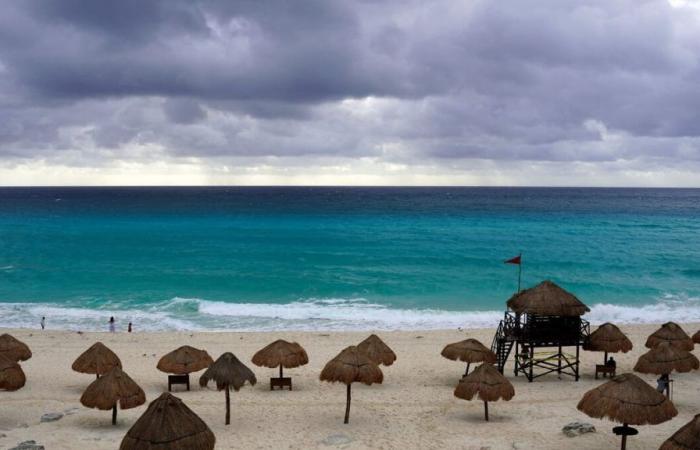Storm surges caused by Milton could cause historic flooding and damage in Florida when the hurricane reaches the US coast Wednesday evening. We explain to you why this destructive phenomenon will continue to hit the popular destination for Quebec vacationers in the years to come.
Tampa Mayor Jane Castor issued a warning to city residents ordered to evacuate Monday evening as the hurricane Milton crossed the Gulf of Mexico.
“If you choose to stay, you will die,” she said.
Barely two weeks after the hurricane Helene, Milton is approaching Florida with winds of more than 250 km/h. It is expected to make landfall as a Category 4 hurricane Wednesday evening.
Such power is cause for concern. When a hurricane approaches a coast, winds and atmospheric pressure compress ocean water and push it toward land. This is called storm surge.
“The stronger the hurricane’s winds and the wider it is, the greater the danger that the storm surge will be significant and cause flooding, especially when the ground level is as low as in the affected areas in Florida,” explains the specialist in climate simulations and analyzes at Ouranos, Christopher McCray.
On Tuesday, the National Hurricane Center reported that the storm surge of Milton could raise water up to 15 feet (more than 4.5 meters) in the Tampa Bay area. Such flooding is considered life-threatening.
Many coastal towns in neighboring regions could also experience significant flooding, authorities warn.
Global warming to blame
Cities that border the Gulf of Mexico, including those in the greater Tampa Bay region, which is popular with Quebecers, are particularly susceptible to damage caused by intense hurricanes like Milton, explains Christopher McCray.
“The warmer the oceans become, the more they will provide the energy that hurricanes feed on. This is what happened with Helene. The water temperature in the Gulf of Mexico was particularly warm, which explains why the hurricane intensified very quickly,” he emphasizes.
Last year, the surface water temperature of the Gulf of Mexico reached a record 88 degrees Fahrenheit (about 31 degrees Celsius).
Since 2010, the Gulf of Mexico has also experienced sea level rise twice as fast as the global average.
Since temperature and water level are two of the factors that most influence the intensity of hurricanes, more of them will strike with a force similar to that of Milton andHelene in the future.
“We don’t know if there will be more hurricanes, but we know that the proportion of category 3, 4 and 5 hurricanes will increase. We will therefore have to rethink where we build our cities and our homes, particularly in the United States,” says Christopher McCray.







